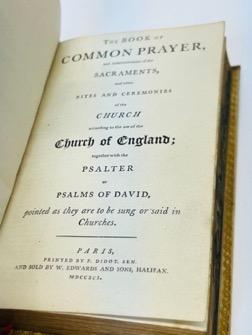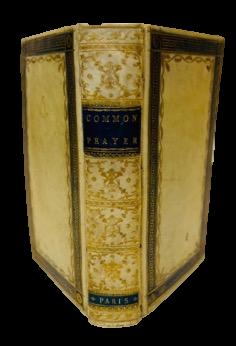
1 minute read
E.C. RARE BOOKS

Booksellers of Antiquarian Books & Ephemera
Advertisement

in size. Of the fore-edge paintings attributed to Edwards of Halifax that have appeared in RBH over the past 65 years Stunning Bindings and Fore-Edge Paintings are rarely seen in this condition and not noted in Fore-Edge Painting reference works.
Price (USD) $8,600
[Edwards Of Halifax] The craftsmen behind design features that occupy a position of considerable importance in the history of bookbinding, the Edwards of Halifax bindery was founded by William Edwards (1723-1808) and continued by several of his brothers, halfbrothers, and sons (by far the most important of the sons being Thomas, who lived from 17621834). This famous firm produced a number of important innovations in binding design, the most significant being the idea of concealing a painting under the gilt of the fore edge. This hidden treasure could be revealed, once the edge was fanned out, as a special surprise element of the volumes they bound typically in Etruscan calf, as here, or in their patented transparent vellum. Although bindings produced by the Edwards workshop are never signed, the present item is such an absolutely characteristic example of Edwards work that Weber cites it in a chapter devoted to distinguishing genuine Edwards bindings from the work of imitators. Particularly telling here are the soft-hued colors in the paintings, a feature much less imitated than other aspects of Edwards volumes. While fore-edge paintings likely produced at the Edwards bindery (often alongside those produced by his imitators) appear in the marketplace with some regularity, most offered are octavo or duodecimo
The Book Of Common Prayer

P. Didot for W. Edwards and Sons, Halifax, 1791. Paris
The Book of Common Prayer, Paris: P. Didot for W. Edwards and Sons, Halifax, 1791. 8vo (146 x 84 mm). Contemporary vellum by Edwards of Halifax. covers with Greek key roll border on a blue wash background within gilt fillets, starburst corner pieces gilt, enclosing a leafy foliage gilt border, smooth spines gilt–lettered on a blue wash background and gilt–stamped with Greek harps and various small tools, marbled endpapers, all edges







